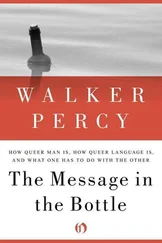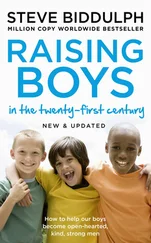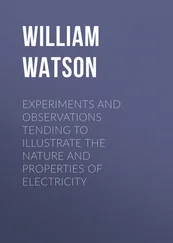Mark Changizi - Harnessed - How Language and Music Mimicked Nature and Transformed Ape to Man
Здесь есть возможность читать онлайн «Mark Changizi - Harnessed - How Language and Music Mimicked Nature and Transformed Ape to Man» весь текст электронной книги совершенно бесплатно (целиком полную версию без сокращений). В некоторых случаях можно слушать аудио, скачать через торрент в формате fb2 и присутствует краткое содержание. Год выпуска: 2011, Издательство: Perseus Books Group, Жанр: Старинная литература, на английском языке. Описание произведения, (предисловие) а так же отзывы посетителей доступны на портале библиотеки ЛибКат.
- Название:Harnessed: How Language and Music Mimicked Nature and Transformed Ape to Man
- Автор:
- Издательство:Perseus Books Group
- Жанр:
- Год:2011
- ISBN:нет данных
- Рейтинг книги:5 / 5. Голосов: 1
-
Избранное:Добавить в избранное
- Отзывы:
-
Ваша оценка:
- 100
- 1
- 2
- 3
- 4
- 5
Harnessed: How Language and Music Mimicked Nature and Transformed Ape to Man: краткое содержание, описание и аннотация
Предлагаем к чтению аннотацию, описание, краткое содержание или предисловие (зависит от того, что написал сам автор книги «Harnessed: How Language and Music Mimicked Nature and Transformed Ape to Man»). Если вы не нашли необходимую информацию о книге — напишите в комментариях, мы постараемся отыскать её.
Harnessed: How Language and Music Mimicked Nature and Transformed Ape to Man — читать онлайн бесплатно полную книгу (весь текст) целиком
Ниже представлен текст книги, разбитый по страницам. Система сохранения места последней прочитанной страницы, позволяет с удобством читать онлайн бесплатно книгу «Harnessed: How Language and Music Mimicked Nature and Transformed Ape to Man», без необходимости каждый раз заново искать на чём Вы остановились. Поставьте закладку, и сможете в любой момент перейти на страницу, на которой закончили чтение.
Интервал:
Закладка:
These three reasons are also the first ones that come to mind for why languages everywhere employ audition (with the secondary exceptions of writing and signed languages for the deaf) rather than vision. We cannot see behind us, through occlusions, or in the dark; but we can hear behind us, through occlusions, and in the dark. In situations where one or more of these—(i), (ii), and (iii) above—apply, vision fails, but audition is ideal. Between me and the students in my course lectures, all three of these conditions apply, and so vision is all but useless as a route to my attention. In such a scenario a student could develop a firsthand appreciation of the value of speech for orienting a listener. And if it weren’t for the fact that I wear headphones blasting Beethoven when I lecture, my students might actually learn this lesson.
The three reasons for vision’s failure mentioned above are good reasons why audition might be favored for language communication, but there is a much more fundamental reason, one that would apply to us even if we had eyes in the backs of our heads and lived on wide-open prairies in a magical realm of sunlit nights. To understand this reason, we must investigate what vision and audition are each good at.
Vision excels at answering the questions “What is it?” and “Where is it?” but not “What happened?” Each glance cannot help but inform you about what objects are around you, and where. But nearly everything you see isn’t doing anything. Mostly you just see nature’s set pieces, currently not participating in any event—and yet each one is visually screaming, “I’m here! I’m here!” There’s a simple reason for this: light is reflecting off all parts of the scene, whether or not the parts have anything interesting to say. Not only are all parts of a scene sending light toward you even when they are not involved in any event, but the visual stimulus often changes in dramatic ways even when the objects out there are not moving. In particular, this happens whenever we move. As we change position, objects in our visual field dynamically shift: their shapes distort, nearer objects move more quickly, and objects shift from visible to occluded and vice versa. Visual movement and change are not, therefore, surefire signals that an event has occurred. In sum, vision is not ideal for sensing events because events have trouble visually outshouting all the showy nonevents.
If visual nature is the loquacious coworker you avoid eye contact with, auditory nature is (ironically) the silent fellow who speaks up only to say, “Piano falling.” Audition excels at the “What’s happening?” sensing a signal only when there’s an event. Audition not only captures events we cannot see—like my (fictional) gesticulating students—but serves to alert us to events occurring even within our view. Nonevents may be screaming visually, but they are not actually making any noise, and so audition has unobstructed access to events—for the simple reason that sound waves are cast only when there is an event.
That’s why audition, but not vision, is intrinsically about “what’s happening.” Audition excels at event perception. And this is crucial to why audition, but not vision, is best suited for everyday language communication. Communication is a kind of event, and thus is a natural for audition. That is, everyday person-to-person language interactions are acute events intended to be comprehended at that moment . Writing is not like this; it is a longer-term record of our thoughts. And when writing does try to be an acute person-to-person means of communication, it tends to take measures to ensure that the receiver gets the message now —and often this is done via an auditory signal, such as when one’s e-mail or text messaging beeps an alert that there is a new message.
That language is auditory and not visual is, in the broadest sense, a case of harnessing, or being like nature for the purpose of best utilizing our hardware. Language was culturally selected to utilize the auditory modality because sound is nature’s modality of event communication.
That’s nice as far as it goes, but it does not take us very far. The Morse code for electric telegraphy utilizes sound (dots and dashes), and even the world-record Morse code reader, Ted McElroy, could only handle reading 75.2 Morse code words per minute (a record set in 1939), whereas we can all comprehend speech comfortably at around 150 words per minute—and with effort, at rates approaching 750 words per minute. Fax machines and modems also communicate by sound, but no human language asks us to squeal and bleep like that. Clearly, not just any auditory communication will do. And that brings us to the main aim of this chapter: to say what auditory communication should sound like in order to best harness our auditory system. We move next to the first step in this project: searching for the atoms of natural sounds, akin to the contours in natural scenes on the visual side.
Nature’s Phonemes
By understanding the different evolutionary roles for vision and audition, we just saw that audition is the appropriate modality to harness for language: sound is nature’s standard event stream, and language therefore wants to utilize sound to make sure language utterances get received. But what kinds of sounds, more specifically, should language use to best harness our brains? The sounds of nature, of course. But the natural world has a large portfolio of sounds it can make, and people are good at mimicking a fair share of these sounds, mostly with their mouths, but sometimes with the help of their hands and underarms. Saying that a well-designed language will use sounds from nature is like saying one had “a sandwich” in a deli. Which sounds from nature? Wind blowing, water splashing, trees falling (when someone is around), leaves rustling, thunder, animal vocalizations, knuckle cracks, eggs breaking? Where is language to begin?
Although nature’s sounds are all over the map, there’s order to the cacophony. Most events we hear are built out of just three fundamental building blocks: hits, slides, and rings.
Hits happen whenever a solid object bumps into another object. When you walk, your feet hit the ground. When you knock, your knuckles hit the door. A tennis match is a game of hits—ball hits racket, ball hits net, ball hits ground. Hits make a distinctive sound. They happen suddenly, and the auditory signal consists of an almost instantaneous explosive burst of energy emanating from the impact.
Slides are the other common kind of physical interaction between solid objects. Slides occur whenever there is a long duration of friction contact between surfaces. If you drag your finger down the page of this book, you’re making a slide. If you push a box along the floor, that’s a slide. The auditory structure of slides differs from that of hits: Rather than a nearly instantaneous release of energy, slides have a non-sudden start and a white-noise-like sound that can last for a more extended period of time. Slides are less common than hits. First, they require a special circumstance, the extended interaction of two surfaces; hits, on the other hand, are what perception scientists call “generic,” because no special coincidences are needed to carry off a hit. Second, when slides do happen their friction tends to significantly lower the energy in the event, and therefore they commonly occur at the tail ends of events. Third, whereas a long sequence of hits is possible (with intervening rings, as discussed in a moment)—as when a ping pong ball bounces lower and lower, for instance—a long sequence of distinct slides is not typically possible; something would have to stop one slide to allow another one to start, but any such interference with a slide is likely to involve a hit.
Читать дальшеИнтервал:
Закладка:
Похожие книги на «Harnessed: How Language and Music Mimicked Nature and Transformed Ape to Man»
Представляем Вашему вниманию похожие книги на «Harnessed: How Language and Music Mimicked Nature and Transformed Ape to Man» списком для выбора. Мы отобрали схожую по названию и смыслу литературу в надежде предоставить читателям больше вариантов отыскать новые, интересные, ещё непрочитанные произведения.
Обсуждение, отзывы о книге «Harnessed: How Language and Music Mimicked Nature and Transformed Ape to Man» и просто собственные мнения читателей. Оставьте ваши комментарии, напишите, что Вы думаете о произведении, его смысле или главных героях. Укажите что конкретно понравилось, а что нет, и почему Вы так считаете.












